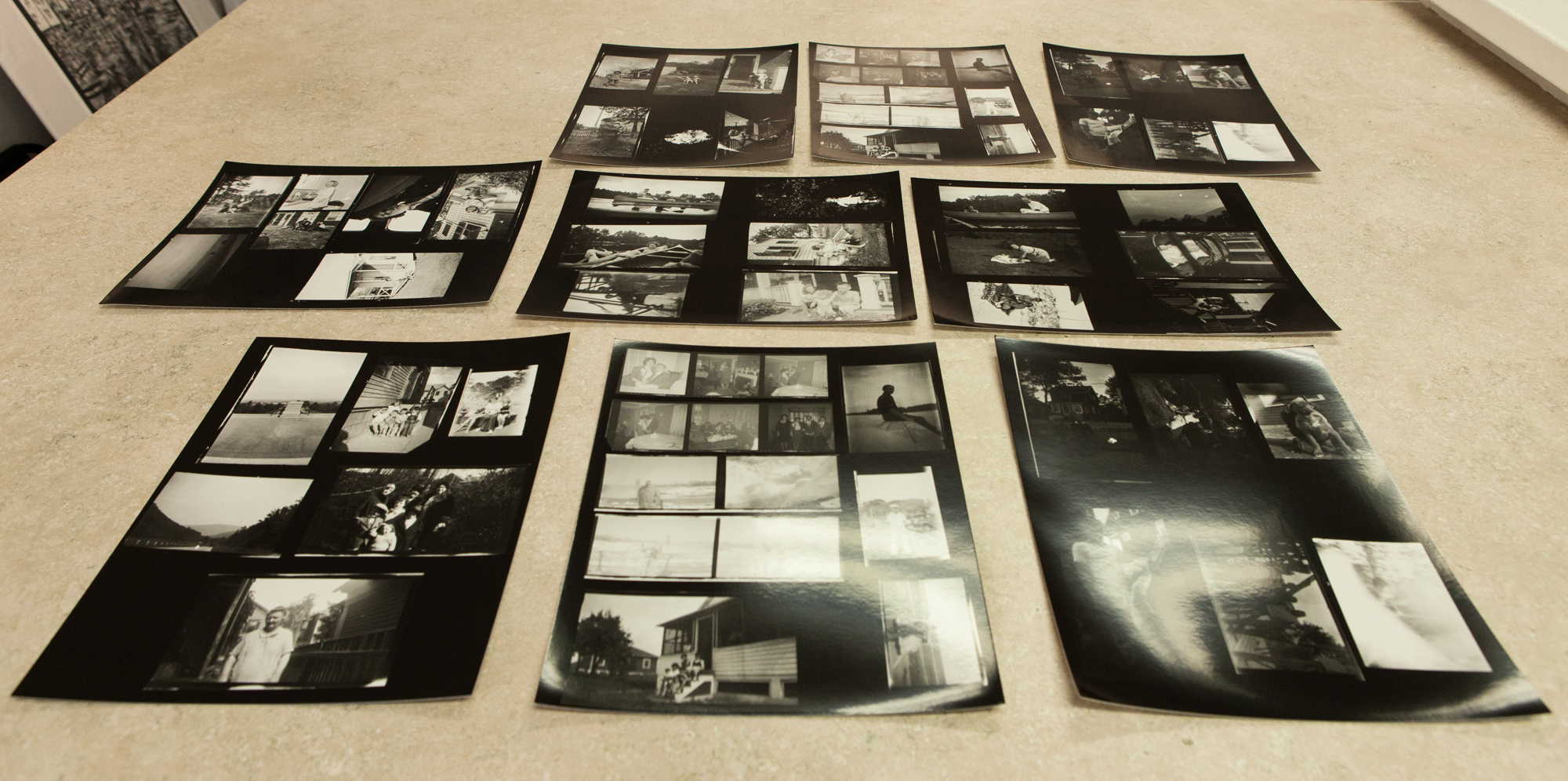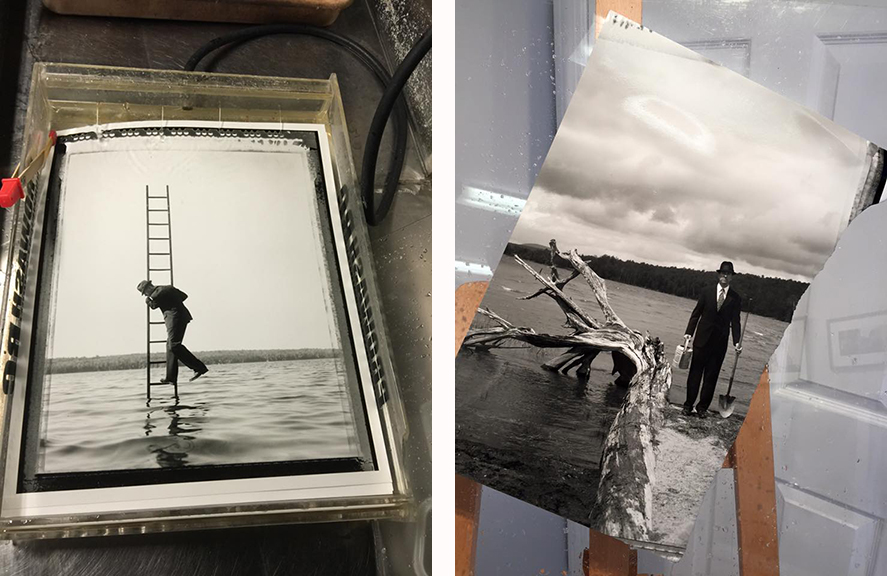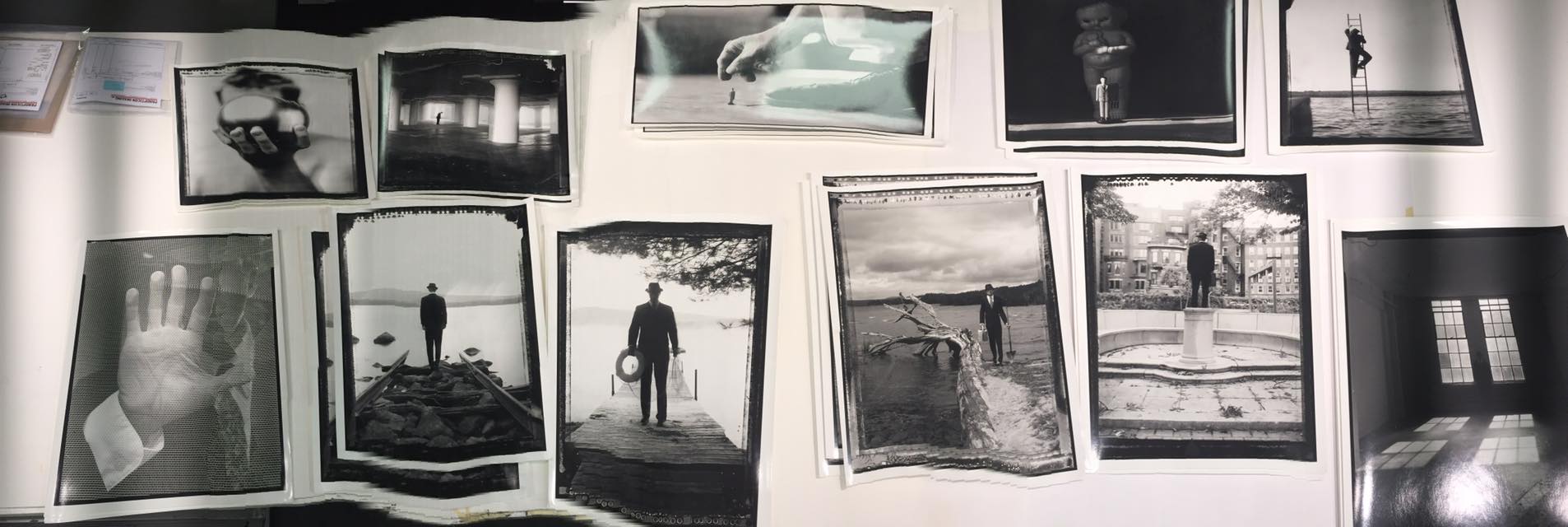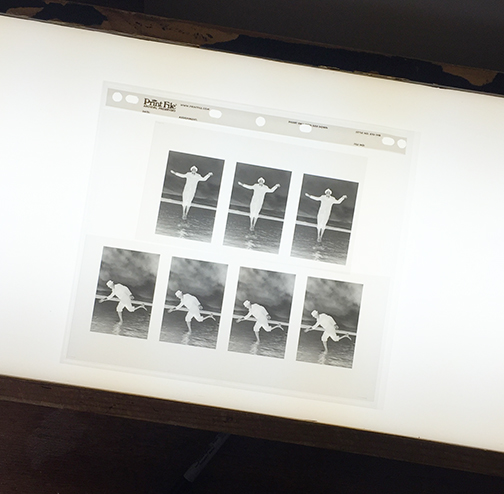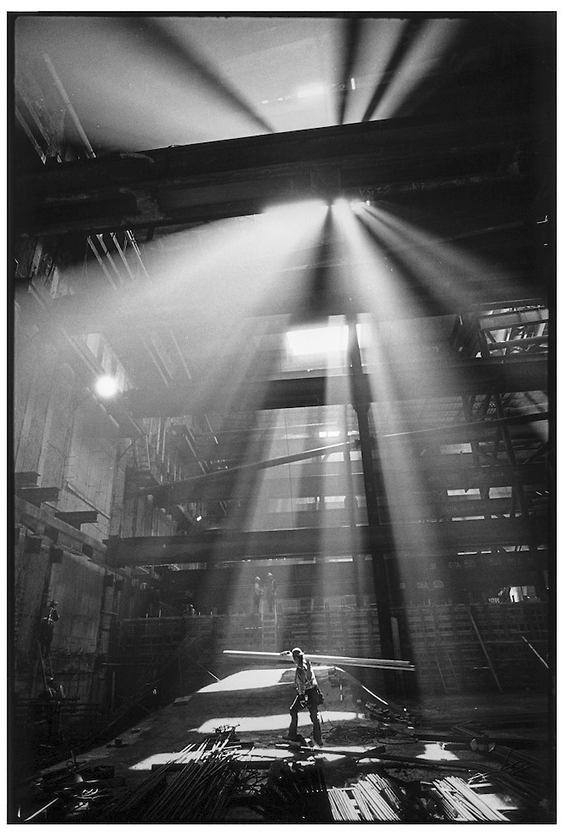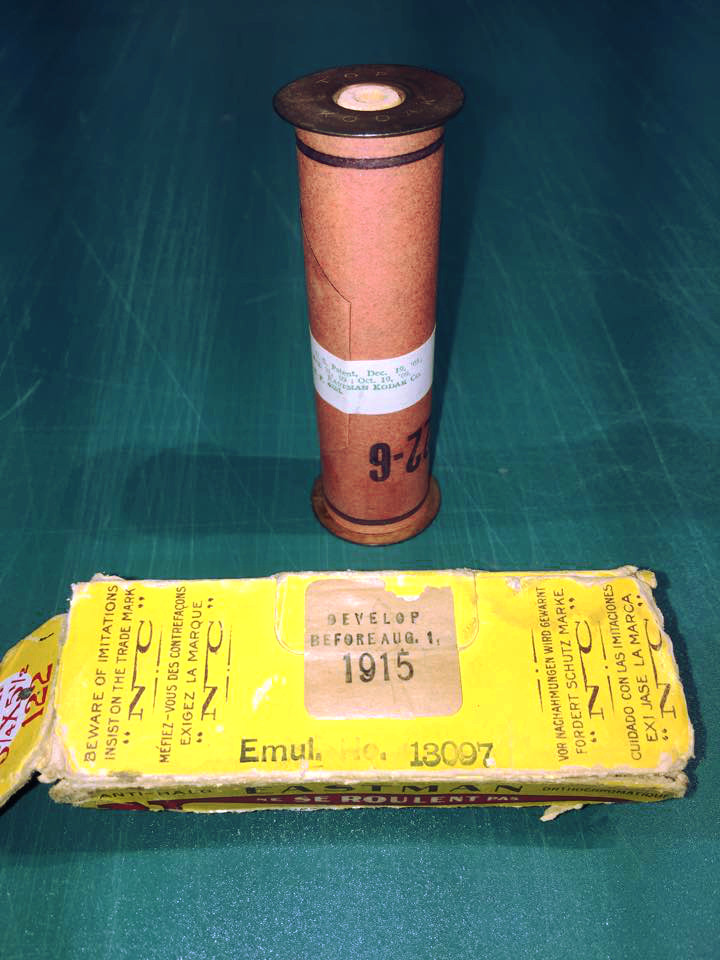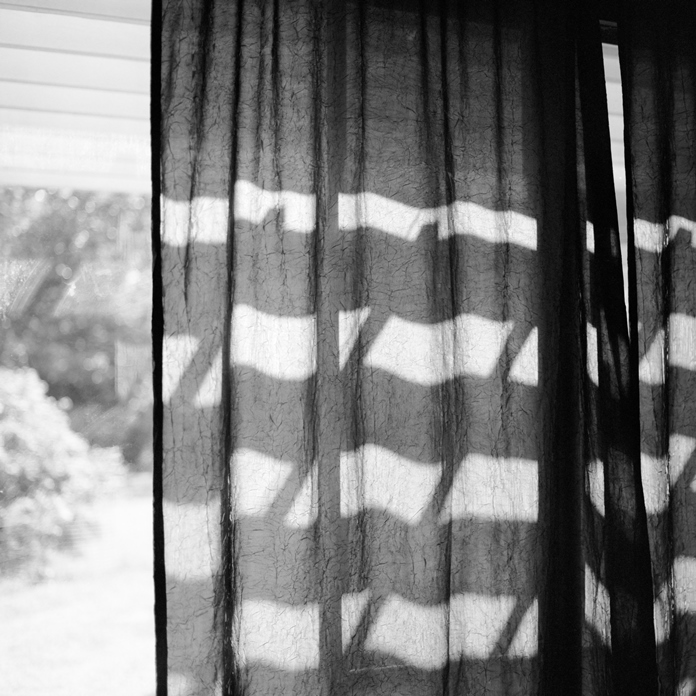We have been lucky to work with Phillip Jones for the past few years. His experience of photography has been growing since he was young with his father being a professional cinematographer. An avid film lover, Phillip primarily shoots medium format black and white film and creates traditional darkroom prints. While his subject matter ranges from each location he photographs, his rich tonal range stays the same. One thing is for sure, he has a style that is known and admired by many and it was great to get to know a little more about his process.
How did you become interested in photography? Was it something you grew up with?
PJ: Yes, photography was always there. My father was a professional cinematographer, filming documentaries out of Washington, DC. He also did still work and was so busy that the best way to see him was visit the darkroom or tag along on his photo shoots.
He landed a dream project filming the Cape Cod National Seashore for its new visitor center. If you ever wondered who made those films in visitor centers, it was dad.
The whole family stayed at a rental cottage on the Great Pond, in Easton, while he worked on the production. After about four days I was getting bored as only a 13-year-old can.
Dad fished an Olympus Pen-F camera out of his bag. Sleek and silver, it exposed 72 half-frame shots onto a 35mm roll of film. He said that I could have just one roll for the vacation and not to drop it into the pond. He'd develop it when we got back home, then we'd go over what I'd come up with.
So, my first roll of film was shot on a dare from my father, a master photographer.
At first, it was hard to commit to actually snapping the shutter, but just wandering around with my photo-radar jacked up changed everything.
It all seems quaint now, most children have taken thousands of iPhone photos before they're ten.
- Walk us through your shooting process – do you scout each place for the perfect time of day or is it more spontaneous where you walk around and see what inspires you?
PJ: When traveling somewhere special, with limited time or if a return trip is unlikely, it often takes longer doing the research than being there.
I study guide books, topographical atlases, Google Earth, Panoramio, "Things to Do" in Trip Advisor, Flickr, Pinterest and Google Images for a start. Then delve deeper into the more interesting locations and, by the flight, have a folder of images, maps, and GPS coordinates.
These are the "official destinations" for the trip, but serve more as back-ups if the free-form exploration fails. I try to be observant and not agenda driven. It's always seemed presumptuous to decide what to photograph first rather than consider incidental subjects as they're encountered.
It's easy to become complacent when working on home turf, feeling like Boston's given up all it's secrets. Then you remember that the city's still evolving and you've just been stuck on the same ant trails. I often check for the transitions of earlier photo sites to get warmed up.
Most American cities are somewhat readable. There's often a river with a historical downtown that people are trying to revitalize. Downstream has industrial and utilitarian structures. Nicer residences are upstream or uphill, things like that.
It's that not difficult to sniff out regions that are pregnant with visual possibilities, but I can't really explain how someone knows that it's time to set up the gear. Guess you've got to be there.
You split your time between Atlanta, Boston, and traveling. Does one city inspire you to create your images more than the other?
PJ: Other photographers have published excellent work on Atlanta, Mark Steinmetz for one. And as much as I love aspects of Atlanta, it's aesthetic of sprawling sameness doesn't jibe with the visual depth that I'm looking for. "The South", on the other hand, is a goldmine for subject matter. Birmingham, Macon, Mobile, Richmond and Savannah have yet to be completely retrofitted.
Boston is special, visually. It's like Philadelphia and Baltimore; important East Coast cities since colonial times. They've had robust industrial periods and are centers of international trade. In other words, they've had an accretion of character over generations that contrasts with their post-industrial rebirths.
When starting this 1100 mile commute between studios in Boston and Atlanta, I envisioned a kind of James Bond character with a dark suit and black attaché hopping on and off jets. It's ended up more like the Joad family in "Grapes of Wrath". The old truck with a mattress strapped on.
So, over a few days, I drive along the East Coast with my Toyota brimming with camera gear and supplies. The only stops I make are scheduled because the trip's just too long for meandering.
Because you shoot at night you must have a lot of long exposures. What is the average night exposure you use? Do you remember what your longest exposure has been so far?
PJ: Now that CMOS sensors are creeping toward a million ISO, digital photography is able to capture night images that we couldn't even imagine before.
Still, a mechanical camera can take eight-hour exposures, even in sub-zero weather. This is useful to record long-term transitions within a scene.
The moon and stars become arcs of light, bodies of water look like sheets of ice and a crowded plaza becomes a de-populated mist.
These visual aspects of long exposures complement the hard-edge linearity of the architecture and industry in my current series.
If it's windy, or even breezy, don't bother with analog night photography. Always using a tripod, I don't touch the camera while the lens is open. Even a cable-release transmits too much hand-vibration for critical detail. Instead, I block the light with an eight-inch card covered with black velvet. I open the lens, let the camera vibrations settle down and simply lift the card up and down for an exposure. Exactly like they did before shutters were introduced in the 1800's.
If there's time, it's best to set up before dusk and photograph the progression into full night. You want to catch the few minutes when the artificial light balances with the fading sunset to retain detail in the shadows.
Cities are not always that dark, especially when they're soft-lit by a glowing low-cloud canopy. Nevertheless, most nocturnal light levels don't even register on meters and film sensitivity drops off with longer exposures, so I estimate the luminance, based on previous sessions, and take a series of exposures, bracketing them in one-stop increments.
A typical set of exposures of an urban night scene might be 5 seconds through 8 minutes at f16, using Ilford Delta 100 film. So that would be: 5s,10s, 20s, 40s,1m, 2m, 4m and 8m. I finish the twelve-frame roll with best-guess exposures. Slightly over-exposed negs scan better than underexposed ones.
When staying at a hotel, I'll ask for a room with an upper-floor balcony, then check out the conditions for an extra-long urban night shot.
When it's gotten truly dark, I set the aperture at F 22–32, open the lens and set the iPhone's alarm for 6-8 hours; before the first light. When nothing goes wrong, there's been some surprisingly good results, especially in under-lit in cities.
Lets chat about the darkroom – how has your process changed throughout the years? Do you find it more difficult to work in film today versus when you started?
PJ: Film photography splits into two basic activities. First, you venture out to great locations and have adventures capturing the images.
Next, you seal yourself off in a claustrophobic black room with trays of smelly chemicals, turn out the lights and work there for days.
But, all those adventures are resurrected in your mind as you're creating the prints. The quiet darkroom intensifies the concentration needed to re-imagine those moments. This helps to create a print that pulls the viewer back into the original experience and makes them glad they visited.
Since your trying to transpose a real event into a flat b&w image, you've got to dip into the darkroom box-of-tricks for help. I try to get as vivid as print as possible without it seeming contrived or over-cooked. If the technique is evident, it's failed.
My darkroom methods have changed dramatically in the last 10 years, thanks in part, to the services of Panopticon.
The Panopticon team develop my negatives. Although it's a more technical than creative part photography, a properly developed negative is essential to the final print's success. Now I have beautifully developed medium-format negatives that I scan as huge 16-bit linear files, equivalent to a 500 megapixel capture.
Next, I process the scan in Photoshop and send the file back to Panopticon, who use their miraculous LVT (light valve technology) device and burn a 4x5 negative of the image. They also output any prints that are too large for my 20 x 24" darkroom trays.
The 4x5's are a dream to print in the darkroom. They still need some burning-in on the corners and edges (enlarger light drop-off)), but it's the same exposure for every negative. This way I have the versatility of Photoshop processing and the beauty of a selenium-toned gelatin-silver print.
- What is it about a scene that makes you want to stop and take a photograph?
PJ: Wolfgang Tillmans said, "If anything's worth photographing, then everything's worth photographing".
Well, sure, but my gallerist says, "You can photograph any crazy thing you want, but I choose what goes on the gallery's walls." So I try to work within that polarity.
The "Photo Alert!" light is always blinking "Stand By" in the back of my brain. Just when you feel that your best work is behind you, suddenly there's a vista that takes your breath away. Or, more likely, you catch something out of the corner of your eye and go back for a second look. Then, while in heightened photographer mode, the more nuanced opportunities are spotted.
I often approach a scene by taking digital shots to experiment with lens lengths, frame lines and positions before breaking out the film camera. That also produces a light reading, timestamp and GPS coordinates for later. Next, I imagine the optimum light and weather conditions for the subject, even the dreaded "first light of dawn" option.
Also, considering the content of my work, I balance how dangerous or illegal my being there is against the promise of the image. Some subjects have been so compelling that I've accepted pretty high risks, like being held for questioning. Still, it's easier to apologize than get permission, which you never get. Helpful hint: Never photograph the military.
Now, later in my career, I have to push back against déjà vu's that say I've taken similar shots before. I probably have, but the current one might be an upgrade.
If all systems are go, I set up and begin trying to get a definitive shot. Don't count on coming back or that conditions won't change. Woody Allen may have said, "80% of success is just showing up", but "seizing the moment" is the other 20%.
- What are some tips/advice you would give to someone just starting out in photography?
PJ: At this point, seems like everyone's already started out in photography. We're in the midst of a technological revolution that we can't fully grasp.
It's a shock to see the century-old giant Nikon reeling from loss of sales to smart phones that didn't even exist 10 years ago.
The iPhone's easy to use and already in your pocket. You can send your creations immediately to Facebook, Instagram and YouTube, then sit back and wait for the "likes" to start cascading in.
If you have a poetical vision, why can't a smart phone serve your needs? It's quite possible to shoot a feature for Vogue with an iPhone, but the looks you'd get from the art director, stylist and models might be wilting.
Now, more photographs are taken each day than in the first fifty years of photography. But there are qualitative differences, like there is between the Gettysburg address and a grocery list.
The basic questions remain, like for a start: What do you choose to put in front of the lens and how do you interpret its image? Is the photograph telling the story you want it to? Do variouscomponents support or contradict this message? The list goes on. Some of it's intuitive, but mostly it's a craft that requires training.
The serious photography student is fortunate to have excellent schools in Boston. The New England School of Photography and Mass College of Art are both good places to study. NESOP has courses in commercial photography and MassArt a great fine-art department, although neither are limited to just that. After some experience, assisting professionals on the job is a crash-course field and studio techniques.
When you feel ready, sign up for portfolio reviews. Get as many crits as possible and if certain observations keep coming up, it's kind of a litmus test.
For me, photography is the key way to connect to life first hand, rather than through the interpretation of others. It's also given me the impetus and license to explore everywhere. That's why I try hard to make my photographs worth seeing.











